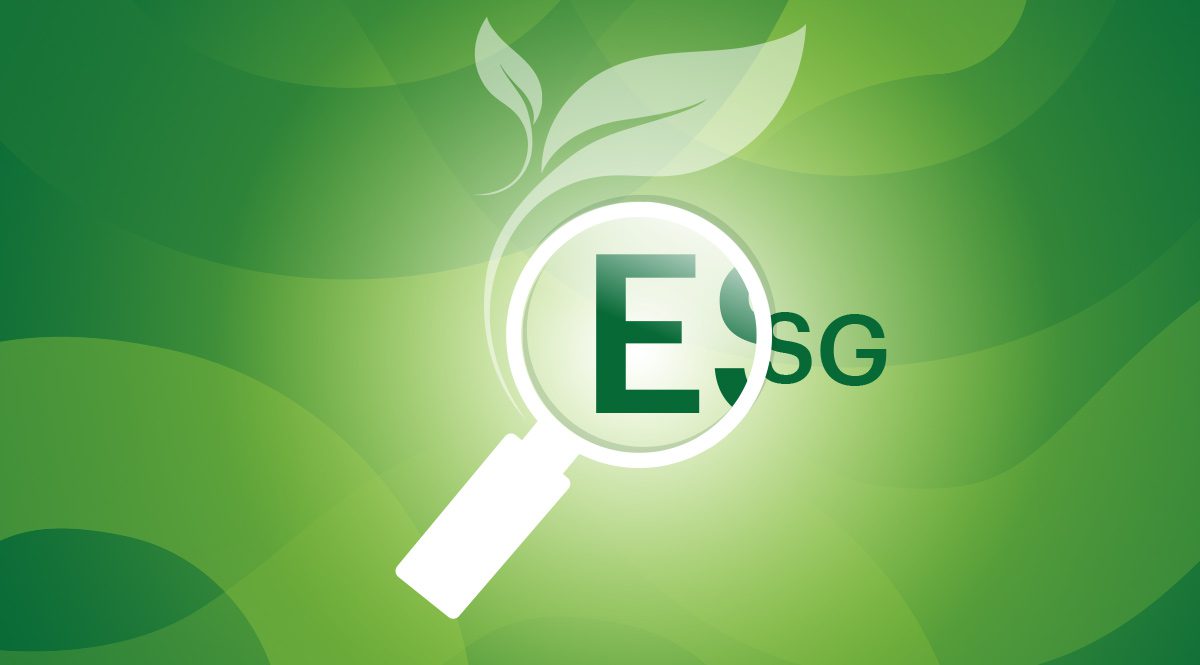Traditionally, a common misconception has pervaded the corporate world: making money is the main purpose of a business – a short-sighted view that holds little weight in 2022. Empowered by the internet, today’s ethically conscious society demands products and services that put people and the planet ahead of profits. This has prompted the revival of a management theory that was popular in the 1950s and ‘60s: stakeholder capitalism – the notion that a business must focus on meeting the needs of all its stakeholders: customers, employees, suppliers, the community, and society.
This aim to create long-term value for stakeholders – not just shareholders – has evolved into a commitment to invest in ESG (Environmental, Social, and Governance) issues – from CO2 reductions and diversity in the workforce to capped executive compensation and anti-corruption, businesses need to address these issues. And it’s not just consumers who value ESG in their pursuit of ethical harmony; investors also seek strong ESG credentials that demonstrate sustainability and provide positive brand messaging – transforming sustainable investing from a niche into an indispensable discipline for investors.
Discover Camms’ ESG Software.
Since it was first mentioned in the United Nation’s Principles for Responsible Investment report in 2006, ESG has rapidly evolved from a public relation, box-ticking exercise into a vital evaluation of an organisation’s collective conscientiousness for social and environmental factors. By 2025, ESG assets under management are expected to reach $53 million – which would represent one-third of global assets under management.
Amid this ethical movement, your business can’t afford to ignore ESG criteria – satisfying these metrics from a stakeholder perspective must be a priority if you are going to survive and prosper. To emphasise the importance of establishing a robust ESG strategy that creates long-term value for all stakeholders, we have created a series of blogs that explores each of the three elements.
In this first instalment, we focus on the importance of satisfying the environmental factor – and how adopting ISO 14001 could help your business to achieve a more sustainable operating model, by adhering to an internationally agreed standard that sets out the requirements for an environmental management system (EMS).
E is for Environmental
Broadly speaking, environmental factors relate to the energy and resources consumed and waste discharged to produce goods and services – every company uses energy and resources; every company is affected by and has an impact on the environment. But how businesses use that energy and manage their environmental footprint has a profound impact on society and the planet.
Previously, organisations only focussed on business sustainability; however, against a backdrop of climate change and our responsibility to prevent it, environmental sustainability has risen in prominence, becoming an integral part of contemporary business ethics – and creating value for those that take it seriously. The benefits of implementing a sustainable operating model that extends beyond making a profit: attracts more customers, allows better access to resources, lowers energy and water consumption and, therefore, can reduce operational costs. Meanwhile, businesses that fail to meet their environmental responsibilities expose themselves to financial and reputational damage.
For example, 27 countries across the globe have implemented progressive carbon tax regulations – a tax imposed by a government to put a direct price on greenhouse gas emissions produced by organisations or industries. This works as an economic incentive for businesses to lower emissions or switch to more efficient processes or cleaner fuels.
As forward-thinking, proactive businesses strive to reduce their environmental footprint, they must balance achieving sustainable objectives with ensuring business growth. To create this equilibrium, they must establish a strong EMS – a set of policies and practices that defines how a business interacts with the environment – that engenders environmental sustainability, enhances corporate image, reduces costs, and drives growth. To streamline this vital process, they should consider the implementation of the ISO 14001 environmental standard.
ISO 14001 environmental standard
ISO 14001 is the internationally recognised standard for successful environmental management. Organisations of all sizes across all sectors adopt ISO 14001 to establish structured management frameworks that instil accountability and self-awareness by better controlling their environmental impact – reducing the risk of costly pollution incidents and guaranteeing compliance with environmental legislation.
The business benefits of ISO 14001 implementation are compelling:
- Positive corporate image – ISO 14001 adoption demonstrates a commitment to environmental responsibilities, fostering an enhanced corporate image. This reputation for promoting a culture of environmental care can increase trust and attract new clients and stakeholders.
- Improved leadership and employee engagement – ISO 14001 implementation requires the engagement of senior managers to ensure the success of the EMS. They can improve their leadership by delegating responsibilities and ensuring that EMS implementation is communicated throughout the organisation. Furthermore, a collective effort to achieve environmental responsibility can increase employee engagement and reduce staff turnover.
- Improved compliance with legal requirements – ISO 14001 implementation provides a framework for identifying, monitoring and complying with relevant environmental requirements – which reduces the chance of fines and prosecutions that can harm a business’s reputation.
- Rapid improvement of processes – Continual improvement is an integral element of ISO 14001. This can be leveraged to transition from small improvements toward greater process enhancements saving time and resources. When the workforce is exposed to a culture that encourages them to work toward common goals of improvement, they are more engaged.
- Reduced costs – As well as using the standard to demonstrate responsible corporate citizenship; it is increasingly viewed as a tool for reducing costs. By improving waste management, enhancing the use of resources, and lowering energy consumption businesses can uncover significant savings.
The Plan-Do-Check-Act (PDCA) cycle is the operating model of all ISO management system standards, including ISO 14001. Businesses that adopt the PDCA cycle at every level of the organisation are provided with a platform from which they can achieve continuous improvement.
The four phases in the PDCA cycle involve:
- Plan – Analyse your systems, identify your objectives, set interim targets for review and establish plans to achieve them.
- Do – Implement your plans within a structured management framework.
- Check – Measure and monitor your results against your objectives.
- Act – Correct and improve your plans to meet and exceed your planned results.
GRC software
Don’t just pay lip service to ISO 14001 certification; to achieve it you must provide demonstrable proof that your business is meeting its requirements. GRC software can add significant value in this regard by offering a framework that’s configured with ISO 14001, helping you to align departments with requirements, integrate data into a single system for improved reporting, break down silos, support decision-making and ensure effective collaboration.
Future-proof your business from an ISO 14001 perspective by implementing GRC software that’s highly configurable, automates data, provides rapid reporting, facilitates multiple users across multiple sites and offers accountability tracking. Get this right and you will benefit from a comprehensive solution that balances environmental management requirements with your business objectives.
Implementing an integrated solution that seamlessly connects to and co-exists with other IT applications offers advantages that extend beyond facilitating an environmentally sustainable operating model; it also provides access to a holistic view of governance, risk, and compliance based on data from stakeholders across the business.
Camms provides software to manage risk, strategy, projects, and people and we offer pre-configured solutions to effectively manage ESG requirements and ISO 14001. Camms software helps businesses make the right decisions, manage risks, align talent, and focus on what matters. Our cloud-based SaaS solution facilitates risk, incident and compliance management and integrates with your existing IT systems and processes. This central point of oversight provides you with critical data to support informed decision making and uncover process and cost efficiencies. To find out how we can support your business, request a demo.
For more information, Download our new ESG eBook where we explain the fundamentals of ESG and show you how to demonstrate and improve your credentials.
Read the other ESG Blogs in this Series
Part 2 – Tackling the social Aspect of ESG
The social aspect of ESG can be notoriously difficult to track, but it is often the area that sees companies hit the headlines. Find out how you can create a fair, ethical culture that operates in a socially responsible way in our blog.
Part 3 – Governance is the Backbone of an ESG Program
Governance is essentially the rules, policies, and procedures that a business operates by, and without rules, you have chaos! Find out why governance is an important part of ESG in our blog.





